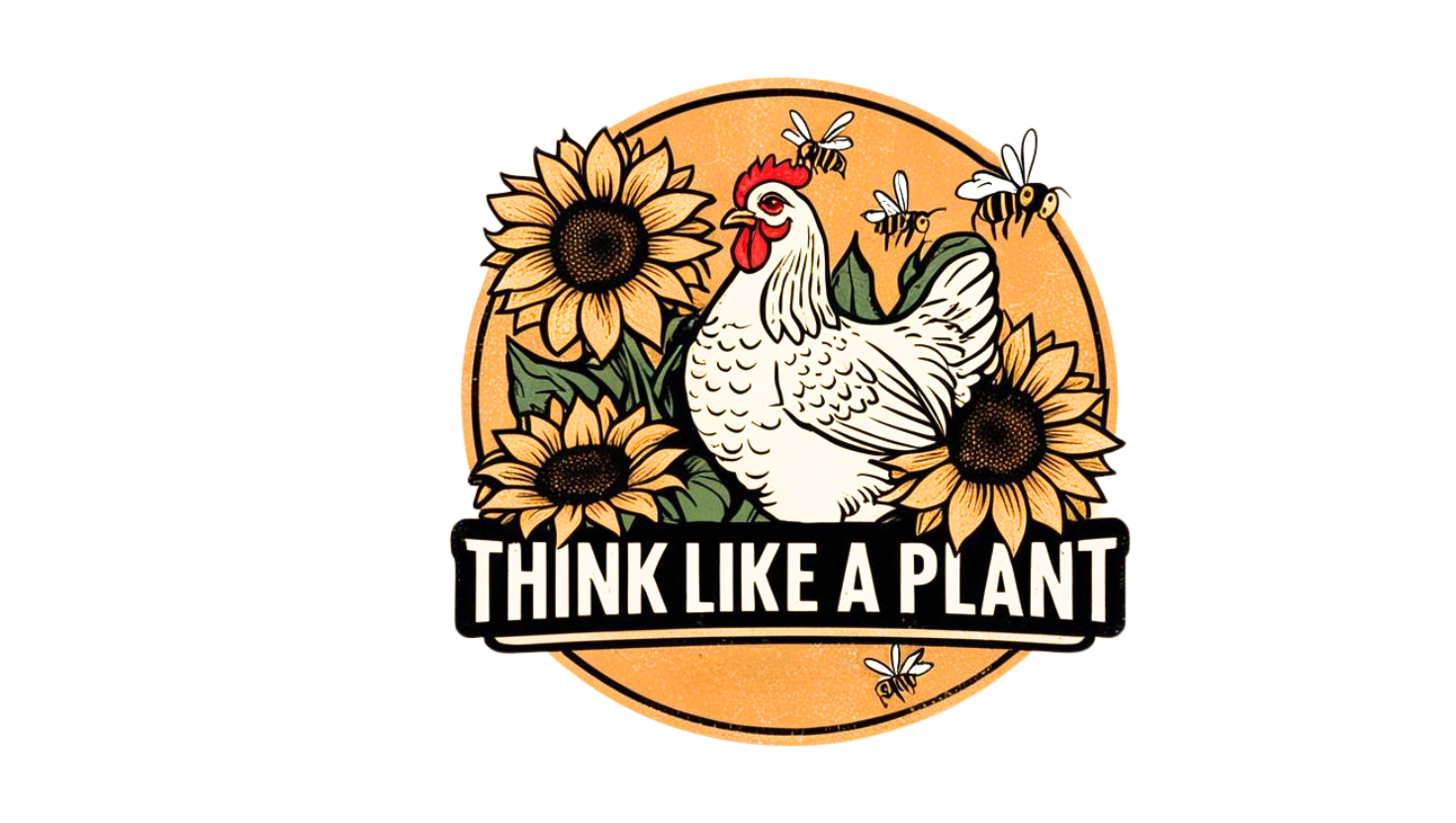Easy to Grow? Beginner Friendly Plants to Start this Spring in Mild Growing Zones 8-10!

Purchasing items through the links provided in my blog is a way to help me earn a small commission at no extra cost to you. Thanks for your interest and support!
Introduction
If there is anything better than growing your own food, it is growing your own food during the cool season like spring. Summer gardening can bring on a couple of challenges especially in southern states like Texas. Some challenges to consider are sunnier and hotter days in the garden, extra time and money watering your crops, and a longer pest controlling season!
It’s definitely a challenge to be outside watering and picking off squash bugs underneath the excruciating sun rays. So, how can you get away with all those hardships in the garden?
If you are just starting off and you don’t want to overwhelm yourself or feel discouraged then don’t risk gardening in the summer months. Here is a list of easy to grow spring crops you can either direct seed them in the ground when the time is right, start as seeds indoors a couple of weeks before your last frost date or may be available for purchase as transplants from your local garden center.
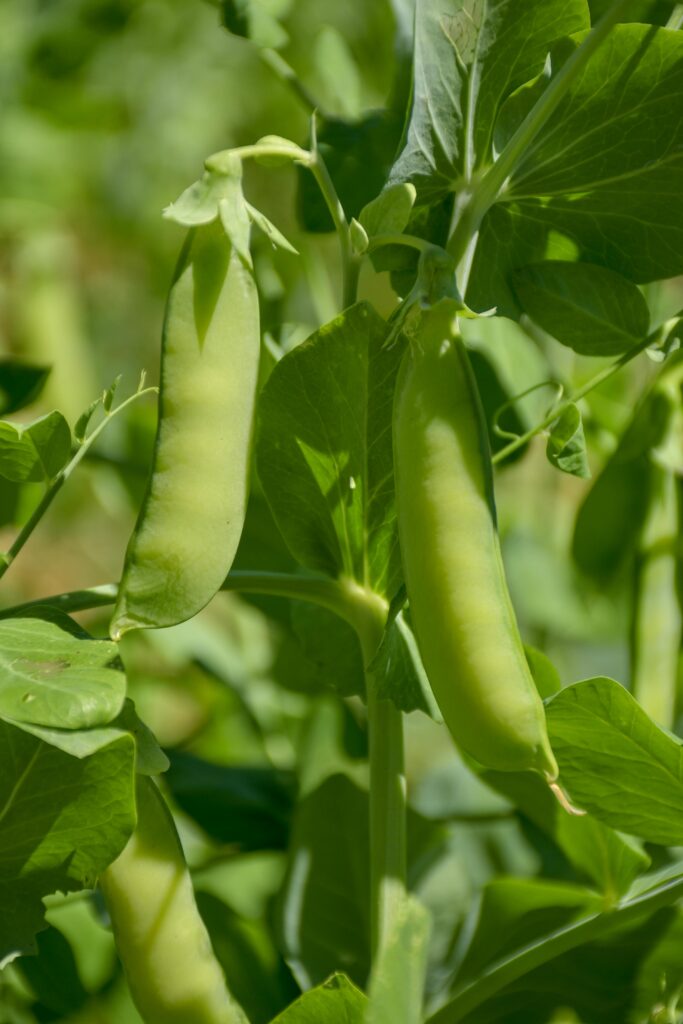
Peas
Growing peas is a no brainer. The question is which kind of peas? There are 3 different types like, snap, shelling, and snow peas with many verities to pick from. It really all depends on what you like to eat.
Snap Peas
Snap Peas are definitely a popular pick because of their sweet flavor. They develop large, rounded pods with large peas. You might want to pull off the stem and side string before snacking on these peas. They are a cross breed of a snow and shelling pea, so if you were to pick just one pea to plant, a snap pea gives you the best of both worlds.
Shelling Peas
Shelling Peas are peas needed to be shelled before consuming or preserving. In other words eat the peas, not the shell. Extra work I must say but well worth it! These are the peas that you buy in the freezer section of your grocery store. Adding fresh or preserved peas to soups, stews, rice, pastas, tuna and chicken salads are all great ways to use those spring sweet peas!
Snow Peas
Snow Peas are the flatter pea pods. The thinner pods are easier to chew than snap peas but you will have to sacrifice the pea size. These peas are cute but tiny. Snow peas are a better option for cooking up in your next stir fry.
Pea Tips
Planting peas in the spring will definitely not disappoint! Do keep in mind, with all the verities out there to choose from, make sure to decide on one that will best fit your location but most importantly check the packet details on the height before you buy. Most pea plants range from 2 to 6 feet in length. If you don’t have some sort of support for the taller pea plants, I would recommend that you start off with the shorter varieties.
Peas are nitrogen fixers, meaning they create their own nitrogen from the air so you don’t need to over fertilize it with nitrogen or you will end up with too many leaves and less pods. Instead, when planting your pea seed, add a tablespoon of mycorrhizae fungi to help with good root development. After your plant dies, leave your pea plants in place so the stored nitrogen can be released back into the soil and used by surrounding or future plants.
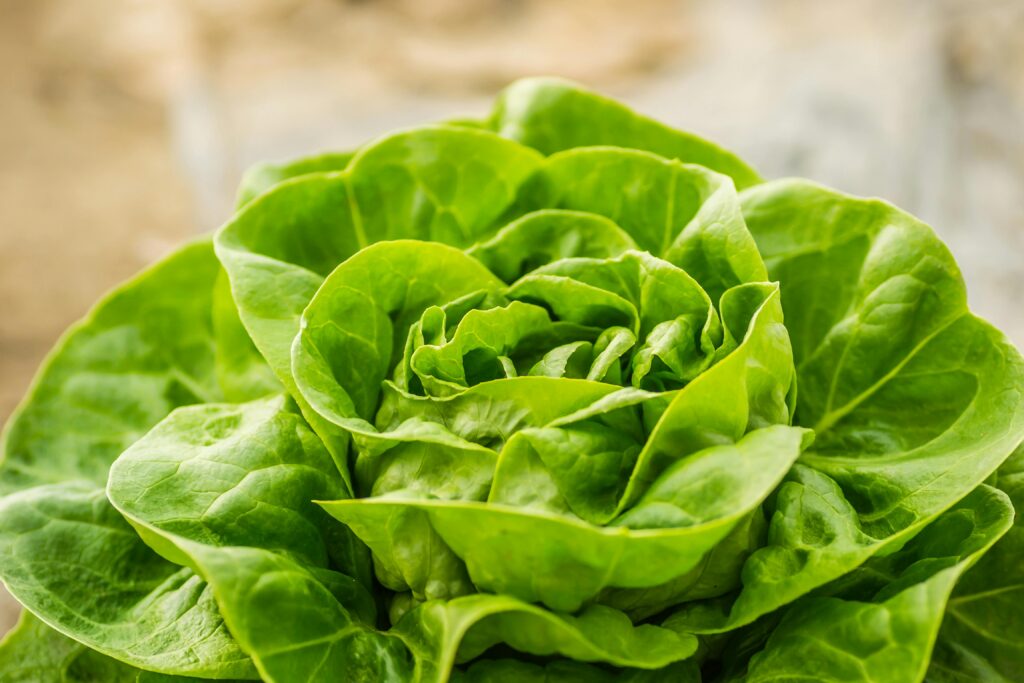
Leafy Greens
Lettuce
Lettuce is so much fun to grow! Like all crops, harvesting lettuce for your next meal is so satisfying. It is so easy to start lettuce from seeds.
Here, in North Texas, I begin lettuce seeds indoors in mid January into February so they are ready to be transplanted outdoors sometime between February and March depending on how cold the weather is. Many times, the weather will surprisingly get hot in February and I will take a risk planting early while still protecting my lettuce with extra mulch, plant domes, or winter frost blankets.
If you are not into starting your own seeds indoors or maybe you don’t have the space for it, buying transplants from your local garden centers is totally fine. I would recommend you transplant any plants you bought after your last frost date to guarantee you don’t lose any lettuce plants to the cold weather.
Lettuce Tips
Plant red lettuce varieties! Bugs start to creep in at the end of lettuce season when the days start getting too hot and they tend to favor eating the green lettuce over the red lettuce.
Another pest to consider are lettuce loving rodents like rabbits. Rabbits love lettuce and if easily available, they will eat it for sure. Protecting your lettuce from wild rabbits sounds more difficult than it really is. Add PVC hoops with rebar over your garden beds and clip on row covers or netting depending on your needs and what you have available.
If your lettuce tastes bitter, it is because of the heat. Pretty much it means lettuce season is over! By this time, you can either leave your lettuce in place and let it bolt for seed collecting, leave it to decompose as green manure, feed leftovers to your lettuce loving pets like chickens, cut at the base or carefully pull it out without over disturbing the soil and throw it in your compost bin.
Spinach
Spinach is a preferred leafy green by many! It is a power house full of nutrients and you can put spinach in pretty much any meal! Don’t hesitate to start these from seed. They are quick to germinate compared to other leafy relatives and the seed size makes it that much easier to sow. You can get a head start and start seeds indoors, direct seed outdoors or purchase transplants after your last frost date.
Spinach Tips
Spinach can be harvested as baby spinach when the leaves are still small and tender. Otherwise, wait till your desired size to harvest and enjoy before it bolts into making seeds and becomes bitter.
Kale
Kale is another power house full of nutrients. It is actually related the the brassica family but is so much easier to grow than broccoli or cauliflower. If you are not a fan of kale because of how fibrous it can be, cut it into smaller pieces and mix it into other leafy greens you do enjoy. In this case maybe one or two plants will be enough for your garden.
Kale Tips
Give kale space! It requires between 12-24 inches of space depending on the variety you choose to plant. Harvest the outer leaves first so the inner leaves can continue to grow and you can enjoy a continuous harvest. Kale can be fibrous so if needed, cook down your kale before eating or cut it into small pieces and add fresh lemon juice to it before enjoying.
Swiss Chard
Swiss chard is a beautiful and colorful leafy green option. Sometimes planted just for its colorful stems, swiss chard is a must try for those who enjoy the beauty of colors on their plate.
Swiss Chard Tips
Space swiss chard about 6 inches apart. Like many other leafy greens, you can harvest outer leaves by cutting at the base and letting the inner leaves grow.
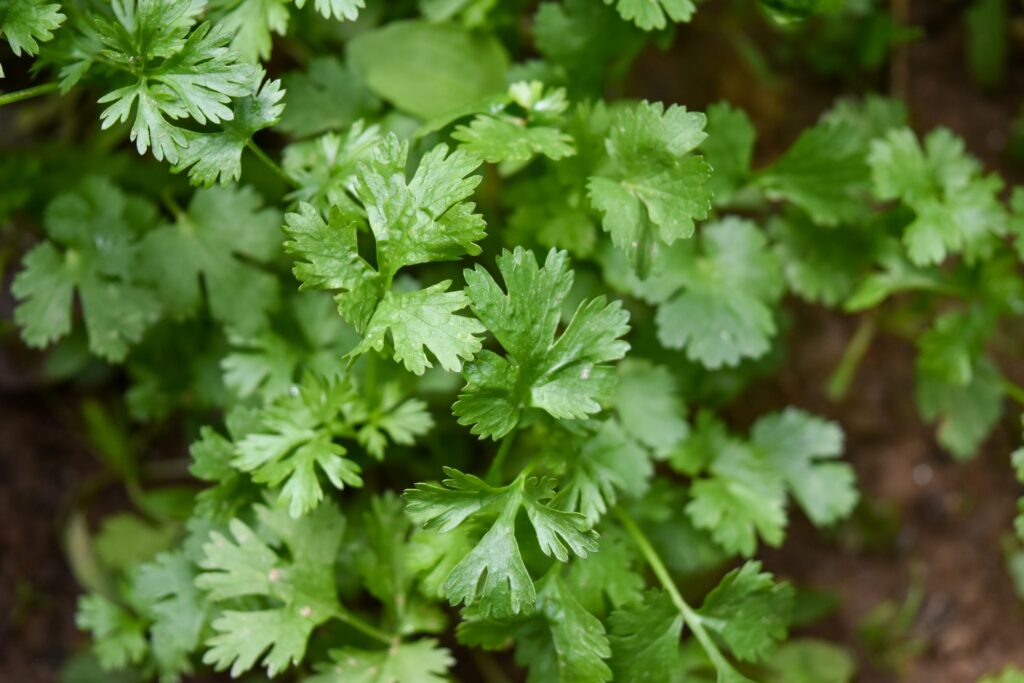
Herbs
Cilantro
If you didn’t plant cilantro during the fall season, you definitely get a second chance at either starting your seeds indoors and transplanting outdoors or buying transplants for the spring. Cilantro gives great flavor to salsas, soups, and yes….especially in tacos. Even when they sell a bunch of cilantro for 99 cents at the stores, it does not compare with fresh picked. Fresh picked cilantro also lasts longer in the fridge for you and if you have any left over, you can always preserve it for future use.
Cilantro Tips
Be patient with your cilantro seeds. They sometimes take extra time to sprout. Make sure to keep them moist and if you plant them too early in the heat, they may not want to sprout till the weather cools down. Spacing them about 6 inches apart will ensure that your cilantro grows to it’s full size.
Cut fresh when needed and preserve the rest before the heat bolts your plant into seeding. You can freeze cilantro in large ice cube molds with water and have fresh cilantro year round. If you want to save money on seeds, make sure you leave a couple of plants to go to seed and collect them for the next growing season.
Parsley
Parsley is a cool loving herb that is a staple for those Italian dishes. There are two different types, flat leaf and curly leaf parsley. Italian flat leaf parsley is a most popular choice because of its stronger flavor and softer leaves. Curly leaf parsley is better used for garnishing because of its thicker texture.
Parsley Tips
Parsley seeds take long to germinate so if you are starting seeds indoors, make sure to allow yourself enough time for your seeds to sprout. Transplants are also usually available at your local garden center. Harvest your parsley as needed and preserve washed parsley in ice cubes for future use.
Spearmint
Spearmint is one of the easiest herbs to grow. Its a perrineal, meaning it grows back year after year. You literally don’t have to work to hard to keep it thriving. On the contrary, this herb is pretty invasive if not controlled.
Having mint at hand year round is great when adding to your fresh lemon, cucumber or watermelon water, for making cold or hot tea, to garnish your next cocktail drink and even for pest control.
Spearmint Tips
Don’t plant spearmint in the ground where it will easily spread with underground runners. Contain it in a pot to save yourself from having to pull it out and keep it from invading other plants.
Make sure to mulch your spearmint to keep it from drying out in the summer and keep it protected in the winter. This will ensure that your perrineal herb comes back year after year.
To presearve your mint, wash your mint, and use a collapsable drying herb rack or hang upside down to air dry. Mint drys very well and can be stored in mason jars for future use.
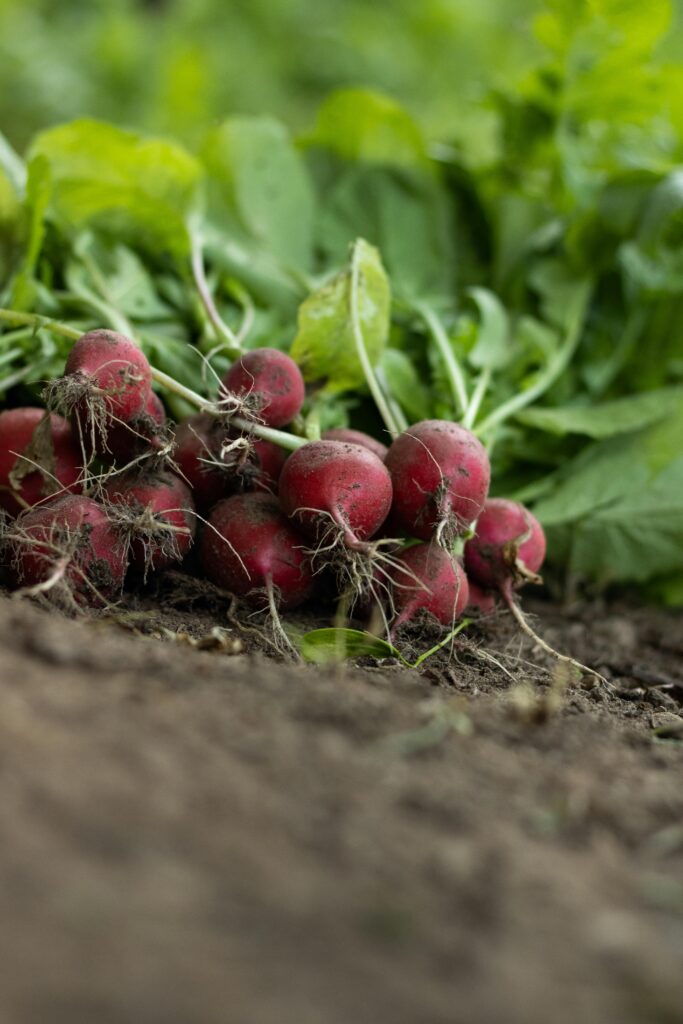
Roots
Carrots
From soups, stews, pastas, salads, wings, sandwiches, or just alone, carrots are a favorite add on to many dishes and as an easy healthy snack. Carrots are well worth the effort to grow in your own backyard.
Carrot Tips
Being that carrot seeds are so small, be patient when sowing them or buy pelleted carrot seeds instead. In the summer it can be a struggle to keep them moist enough to germinate. Add burlap over your seeds and water to keep them consistently moist. As carrot is a root, it’s best to direct seed them in the ground.
Spacing them out properly is important for their growth. If not spaced out or thinned out properly, carrots will not grow to their full potential. Ideally it’s best to sow carrot seeds already spaced out to avoid thinning for two main reasons. First, thinning out your carrots, attracts the carrot fly pest. They can smell it from afar and will easily find your carrots a lot quicker. Second, you waste a lot of seeds so unless you collect your own seeds, then wasting seeds is the same as wasting money.
Fertilize your carrots for healthy growth and keep the soil consistently moist so you don’t harvest super hairy carrots. Harvest your carrots as needed or harvest all and preserve them for future use. You can preserve them by blanching and freezing, canning, pickling or storing in moist sand unwashed in a cool, dark place. In the winter, carrots can be left in the ground for longer lasting use. Harvest in the winter as needed.
Radishes
Sure, radishes are not everybody’s favorite but they sure are one of the easiest and quickest crops to grow. With only a 4-6 week waiting window, you can be harvesting radishes in no time. Not only are they easy to grow but they are roots so they help aerate the soil for other crops like carrots, tomatoes, and other deep rooting crops.
Radish Tips
Plant crops that you or your family will eat. If radishes is not something you enjoy, then don’t waste your time. Even when radishes are fast and easy to grow, if there is no way you are eating them, then use that garden space for other crops you will eat.
If you are into radishes or you just need to plant a couple, succession planting will help you spread out your harvest. You won’t have to harvest many at once and then wonder what you will do with them. You can preserve them but they don’t have long lasting results.
Don’t start radishes indoors. Root crops do not transplant well. They are best direct sown in the ground. Make sure to sow radishes about 1 inch in loose soil so they don’t grow long and skinny.
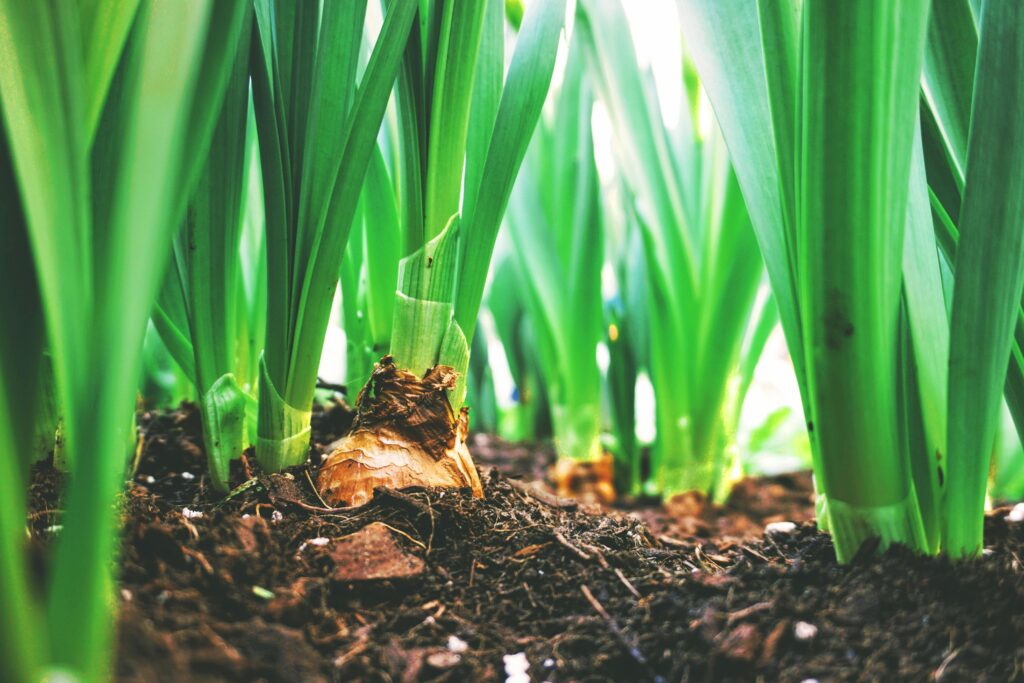
Onions
One of the favorites in most kitchens! You just cant cook without an onion. Its essential so why not plant some. If planted in the right spot, you can plant these onions and harvest them before the painful summer months.
Onion Tips
First off, make sure you buy onions for your location. Depending on where you live, you will either need short, intermediate, or long day onions. Picking the wrong variety can have disappointing results. Check an onion day length map online to make sure you pick the right type of onion for your area. Onions can be interplanted with other crops as a natural pest controlling method. They are shallow rooted so they usually don’t disturb other plants.
Onions can be planted in the spring but because they take a long time to bulb, the best time to plant onions in the ground is in the fall season. During the fall season, onions will grow in size slowly while waiting to bulb in the early spring time when the day light lengthen. This will give you an earlier harvest.
Next fall, try to over winter your onions with mulch and when spring arrives, make sure you feed them with fertilizer and increase watering to make sure they start forming bulbs. Onions have shallow roots so make sure your watering is consistent so they don’t dry out.
Conclusion
Planting spring crops in growing zone 8-10 offers a wonderful opportunity for gardeners, as these zones enjoy a mild climate with a longer growing season compared to cooler regions. With the right care and attention, your spring garden can be a bountiful source of fresh produce, offering delicious rewards throughout the growing season. Happy gardening!
